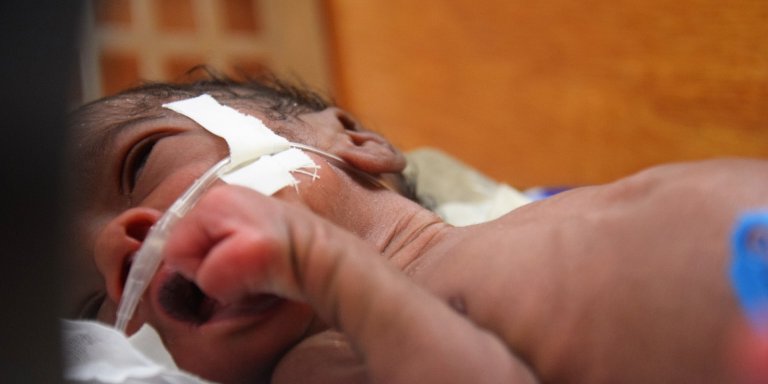Five symptoms that - when present - count as alarm signals: decreased consciousness, low blood sugar, difficulty in breathing, loss of appetite, and a low small upper arm circumference. "You just count how many of these five symptoms you see," says pediatrician and principal investigator Wieger Voskuijl, of the Amsterdam Centre for Global Child Health at the Emma Children's Hospital, Amsterdam UMC. If the child shows one of the five symptoms, the risk of death is three times higher, and with two vital signals it is already eleven times higher compared to having none. This applies on every day that the child is admitted.
Counting
The researchers came across this simple but effective counting method when they were working on a mathematical model to predict the daily risk of death in ill malnourished children. To do so, they used data from 843 severely malnourished children up to the age of 13 who had been admitted to three hospitals in Malawi and Kenya.
"When our mathematical model became increasingly complicated, we decided to go back to basics: look closely at the patient. That's how we discovered that these five symptoms - which a doctor can easily see or measure - have a relationship with mortality. They are clinical warning signs. The more signs you see, the greater the risk of mortality."
Scarce resources
Voskuijl, who works in Malawi for several months a year and is involved with the Amsterdam Centre for Global Child Health, thinks the "counting method" is a useful way to further improve the existing WHO guidelines. "Doctors now look at severely malnourished children as one large group. It would be an enormous gain if we succeeded in better distinguishing between children with a low risk of death and those with a high risk who therefore need more care. Especially in resource -limited settings.
In follow-up studies, the researchers want to find out whether this method contributes to further reducing child mortality.
Read the full text in BMC Medicine here.
This study was conducted with financial support from the Thrasher Foundation and the Support Emma Foundation.




